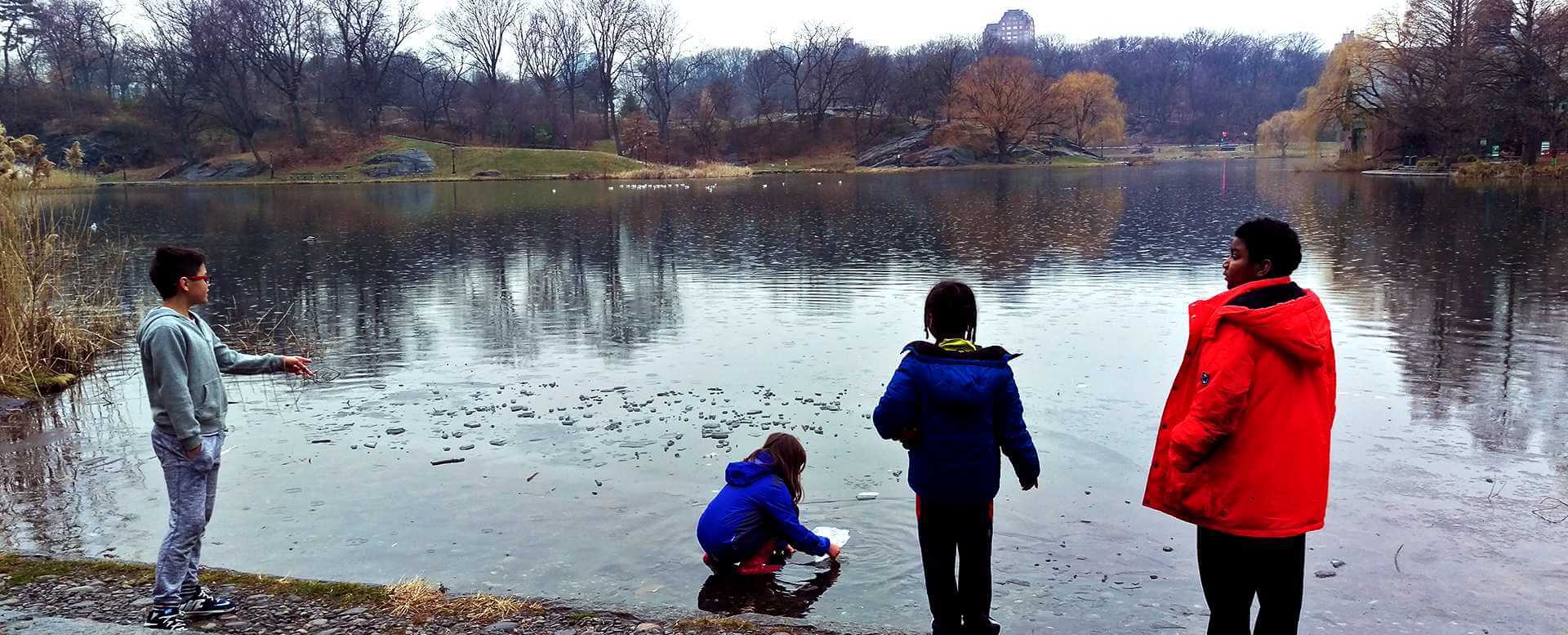You walk into a small building: a place that advertises itself as an alternative to regular school.
Young people of all ages are hanging out, playing games, interacting with screens, reading books, and casually chatting. You notice some adults around, but they’re mostly doing their own thing. The whole place feels open, relaxed, accepting, and free.
Quiz: Where are you?
- a Sudbury school
- an Agile Learning Center
- a Liberated Learners center
No matter your answer, you’re correct.
There are few spaces in our culture that truly empower young people to be in control of their choices: spaces where children face few requirements and can genuinely decline the invitations of adults. Adults run the show in every conventional school, and most progressive schools, and most homeschooling co-ops.
Sudbury schools, Agile Learning Centers, and Liberated Learners centers are the exceptions. In these places, kids get to choose what they do for essentially the whole day, even if that looks like “doing nothing.”
If you briefly visited each one of these centers, you might conclude that they’re the same thing. But dig a little deeper and you’ll see that each brings a different set of values, goals, and structure to the ecosystem of Self-Directed Education. In this article I review the core features of these three growing networks, each of which trusts and empowers young people in its own way.1, 2
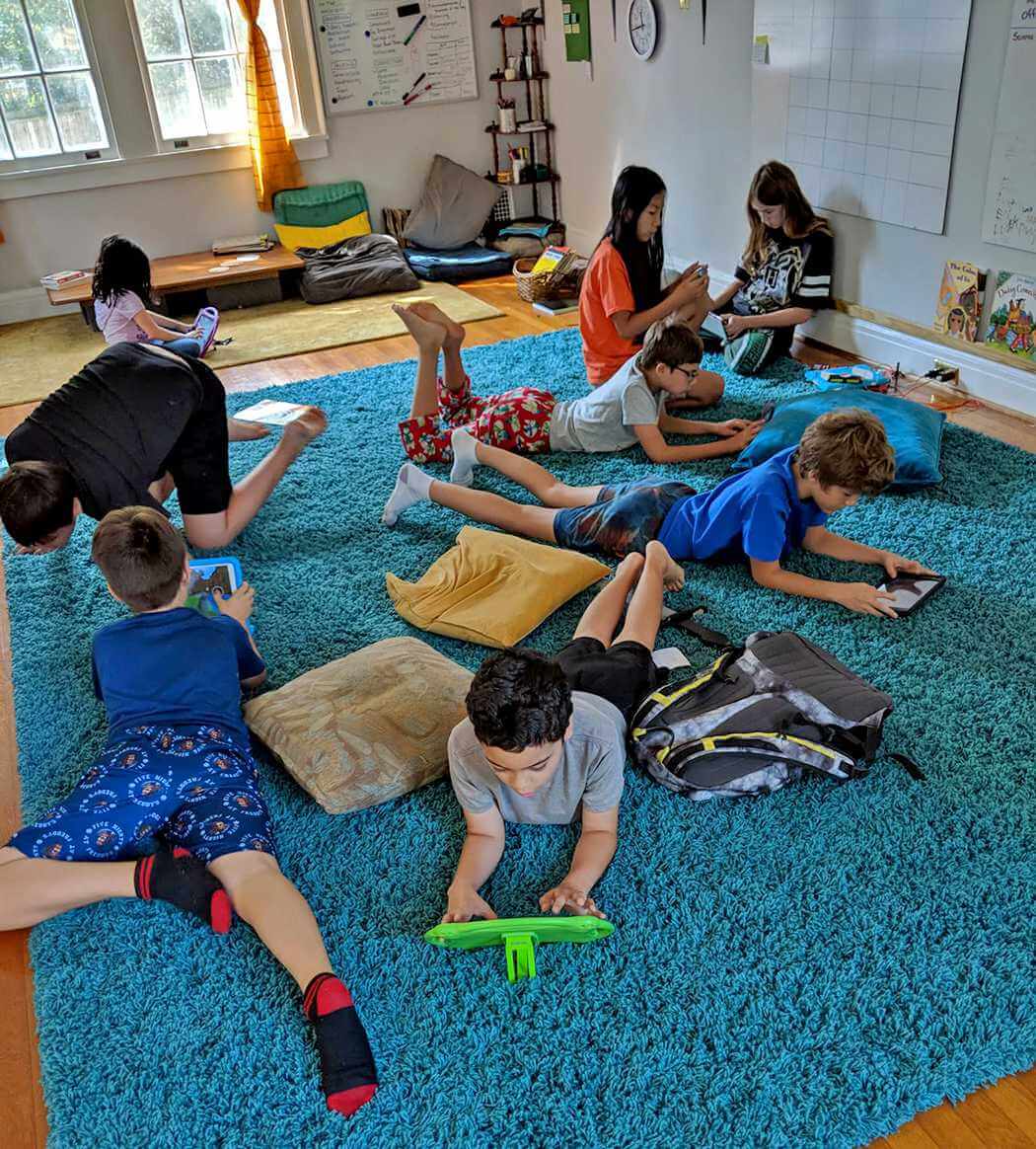
A Brief History
Let’s start with a brief history of each of the models: Where they started, how they’ve grown, and what the network looks like now.
Sudbury: the pioneers
In the late sixties and early seventies, hundreds of experimental schools opened their doors; most shuttered just a few years later. Of the few that stuck around, the Sudbury Valley School (SVS) of Framingham, Massachusetts, stands apart. Its founders included Daniel Greenberg and Mimsy Sadofsky, both of whom continue to staff at the school today.
Operating since 1968, SVS began helping other groups to open similar schools beginning in the 1990s. Today there are more than sixty Sudbury model schools, primarily in the United States but also in France, Japan, Germany, and Israel.
A few years ago, SVS distanced itself from the broader Sudbury school movement and no longer plays an active role in promoting new schools based on its model (beyond selling its Planning Kit).
There is no official network of Sudbury schools and there is no formal restriction on calling oneself a “Sudbury” school, although an unofficial email list connects a large number of the schools. While it’s theoretically possible to find schools that misuse the label, SVS has published so many books and essays that it’s easy to spot a school that doesn’t adhere to the core principles.
Liberated Learners: the rebels
In the mid-nineties, disgruntled middle-school teachers Ken Danford and Joshua Hornick stumbled upon Grace Llewellyn’s The Teenage Liberation Handbook and decided to open a resource center for teens. In 1996 the “Pathfinder Learning Center” was born in Western Massachusetts, renamed six years later to North Star: Self-Directed Learning for Teens.
Beginning in 2007 North Star began offering workshops to those interested in replicating its model. In 2012, Ken Danford and Joel Hammon created a new non-profit organization, Liberated Learners (LL), dedicated to spreading the North Star model and supporting its member centers, of which there are a dozen today, mostly concentrated in the northeast USA.
Liberated Learners centers closely follow the North Star model, and they pay an annual fee to remain part of Liberated Learners network.
Agile Learning Centers: the new kids on the block
In 2012, Tomis Parker was working at the Manhattan Free School (a democratic free school similar to a Sudbury school) when he met Arthur Brock, an innovator with experience in agile software development. Together they developed Arthur’s idea for an “agile learning center” with several other key collaborators in 2013 at Emerging Leader Labs. The formal ALC network emerged in 2014 in partnership with Nancy Tilton’s Mosaic School (now ALC Mosaic).
Agile Learning Centers are expanding rapidly across the world, largely thanks to its open-source nature. Today the network includes 15-20 ALCs in addition to dozens of “startup groups,” “early stage ALCs,” and groups “using ALC tools.”
Agile Learning Facilitator trainings were originally held at ALC Mosaic but, as of 2017, take place all over the world. Anyone who completes a facilitator training and maintains good standing with the community is allowed to organize their own trainings. ALC offers a free starter kit and charges a small fee for membership in its network.
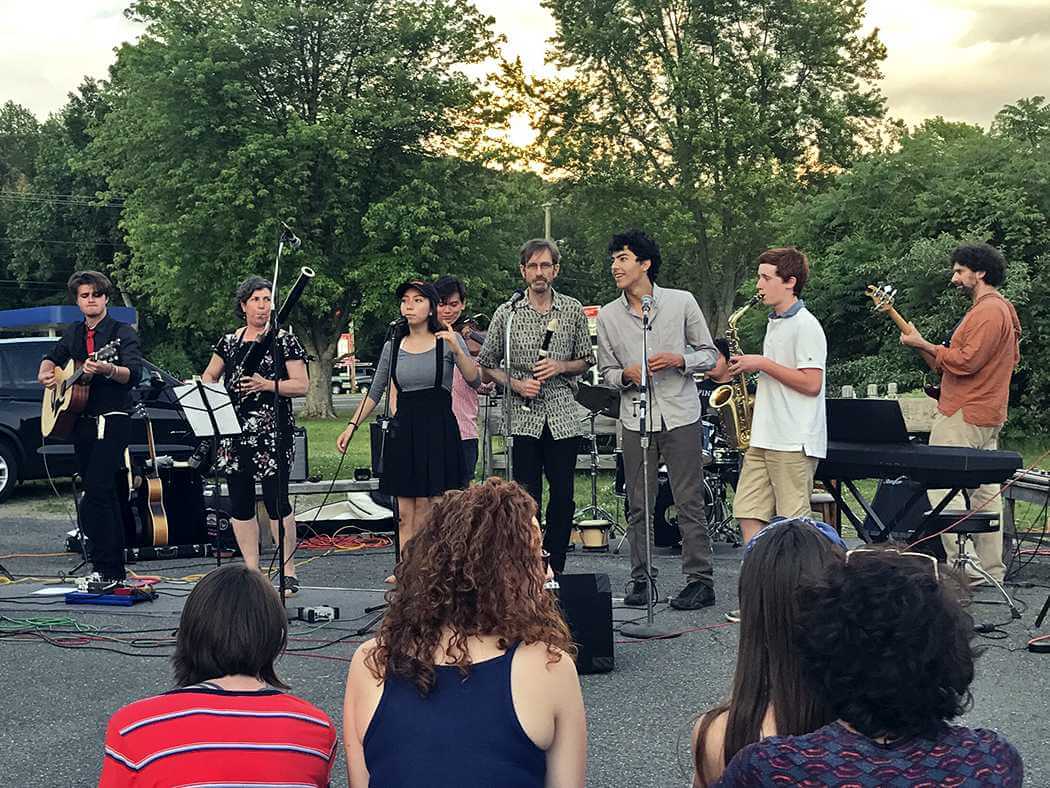
Is it a School?
To what extent is each of these a “school?” How many days a week (and hours a day) are you expected to attend? What ages attend?
Sudbury: definitely a school
Every Sudbury school that I’m aware of operates as a legal private school, subject to the private schools laws of its respective state (or other governing body). They typically serve the full age spectrum (4-18) under one roof, and many offer diplomas (more on that later).
As private school students, most young people at Sudbury schools must attend a certain number of days per week (often 5), be present for a minimum number of hours per day (often 5), and arrive at school within a certain time window. This doesn’t mean that Sudbury students are locked up on campus all day; most Sudbury schools have flexible off-campus policies, so that a student can walk to the store or do an off-site apprenticeship with minimal interference.
Sudbury schools don’t just require attendance because of legalities; as the staff member of one prominent Sudbury school told me,
Another reason we insist on being a “school” (i.e., requiring attendance) is for the sake of our culture and togetherness. In our experience, when students are entitled to “drop in” whenever they like, community morale dips; the student body feels less cohesion and identifies less with each other as a group and with the school. The place feels like a loose federation of individuals going about their business. We treasure autonomy, but we know that individuals’ goals are accomplished most consistently and efficiently in the context of a supportive and positive community. We’ve found we get that only when everyone is showing up everyday.
Liberated Learners: definitely not a school
Liberated Learners centers are, by definition, not schools. Instead, they are organized as not-for-profit resource centers for young people who are legally homeschooling. Ken Danford stresses this point often: you can’t just sign your kid up for a Liberated Learners center, drop them off every day, and expect that the “school” will do the educating. Liberated Learners centers are more like a YMCA than a school. LL centers are purposefully closed one day in each “schoolweek” to emphasize the fact that, no, they really aren’t a school.
Liberated Learners centers typically serve middle- and high-school aged young people (12-18). A few centers do serve younger members, but those are the exception.
Most kids attending Liberated Learners centers don’t begin as homeschoolers; they come straight from the school system, and the Liberated Learners staff walk them through the process of becoming self-directed homeschoolers. LL centers attract few lifelong homeschoolers; they more often serve as liberators of kids from conventional school.
Liberated Learners members—note that they are “members,” not students—come and go whenever they please, without restriction. They may choose to enroll 1-, 2-, 3-, or 4-days a week, with a corresponding tuition rate. The centers don’t issue diplomas. While some members stick around till age 18, many others move on to work, higher education, and other pursuits before age 18.
Agile Learning Centers: yes and no
While the longest-running Agile Learning Centers are legally formed as private schools and subject to attendance requirements similar to a Sudbury school, an ALC doesn’t have to be a school. There are parent co-ops, preschool groups, after-school groups, and homeschooling collectives that operate with ALC tools and principles. These groups may only operate a few days a week and have very flexible hours, like Liberated Learners centers.
Don’t think of ALCs as schools—think of them more like intentional communities with shared values and practices. ALCs come in all shapes, sizes, and flavors.
The largest Agile Learning Centers serve the full spectrum (5-18), and sometimes preschool ages as well. Some ALCs serve only teenagers, some serve only young children, and some are even experimenting with serving adults with ALC coworking centers.
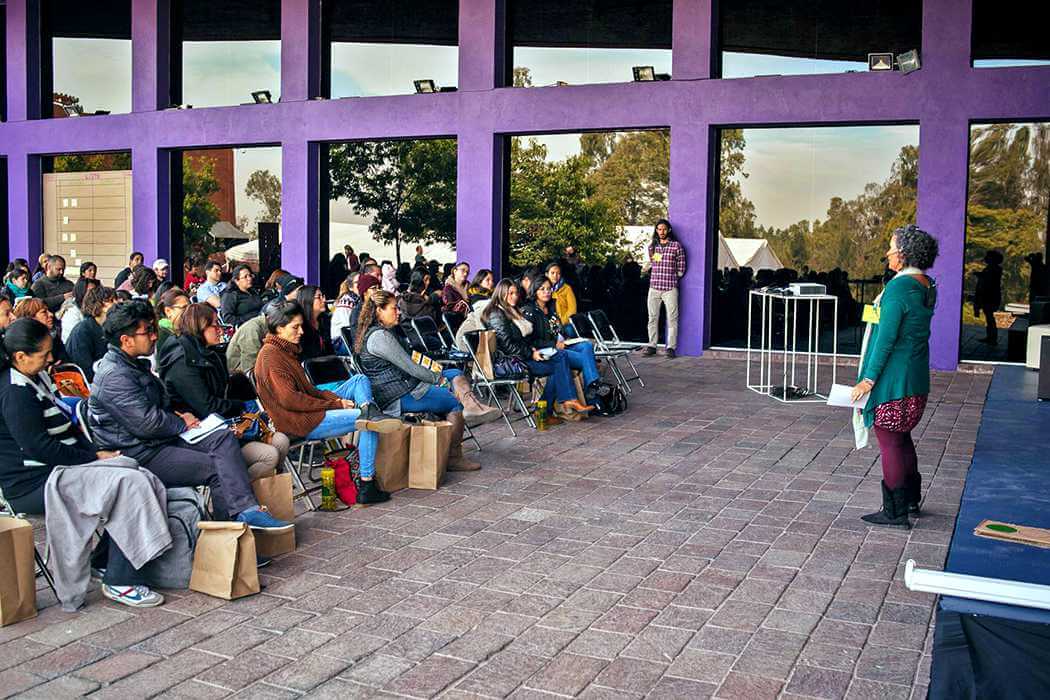
Core Values
What lies at the heart of each of the models? What is their foundational philosophy?
Sudbury: individual freedom within democratic community
Sudbury Schools focus on protecting the sovereignty of the individual child. From the moment you step foot on campus, no one can tell you what to do (with a few small exceptions). Everything is optional. Adults will not try to “help” you. Other students may approach you, but you may ignore them. No participation is required. You are a free individual. School staff purposefully don’t cook up a glittering menu of wonderful activities for students to choose from because they want to maximize the child’s experience of autonomy, choice, and personal responsibility.
This individual freedom exists within a democratic community. By “democratic” we’re talking about a certain style of old-school American direct democracy: the New England town hall meeting. Every member of a Sudbury school (from the 5-year-olds to the founders) has an equal vote on all matters of significance at the optional weekly School Meeting. Conflict resolution is also based on the American model, organized around the jury-like Judicial Committee.
Community itself is a vital part of the Sudbury experience. Sudbury schools want everyone to show up every day, learn how to navigate communal space, share resources, and get along with others... while always remaining fully empowered to say “no” to group activities.
Sudbury Schools see themselves as places that help young people become functional, powerful individuals within authentically democratic societies.
Liberated Learners: no-BS practical guidance
Liberated Learners centers are the most practical and straightforward of the three models. Their message is essentially: If school isn’t working for you, then stop going, and start doing something better. Let’s figure out what that looks like for you.
Liberated Learners centers see themselves as just one stop on a young person’s journey. Much is offered—classes, field trips, one-on-one tutorials, and a variety of rooms and resources—but participation is never required. LL centers encourage you to only stick around for as long you need; if, for example, you’re 16 and ready for community college classes, the staff will encourage you to leave (or reduce your enrollment days) in order to go take those community college classes.
Weekly advisory meetings are a foundational part of the Liberated Learners experience: every member meets one-on-one with a staff advisor, once a week, for roughly 30 minutes. This is where the staff check-in with individual members, discuss their short- and long-term plans, and suggest various options and activities for them.
Liberated Learners centers see themselves as flexible resource centers that improve the lives of young people who struggle in conventional school.
Agile Learning Centers: self-direction with intention
ALC philosophy is difficult to pin down (despite being so well-documented), because its core principle is that of ongoing evolution. An ALC’s culture and policies are never set in stone: they are continually updated to meet the needs of the community. The only constant is change.
Agile Learning Centers prize self-direction, and they give kids genuine freedom throughout most of the day, just as the other two models do. But ALCs also believe that self-direction works best when done with intention, and to this end, every ALCs creates daily space for intention and reflection (typically through brief small-group meetings). For the community as a whole, there are also weekly meetings that set the schedule and tweak the school culture using a decision-making system that aims for consensus. ALCs believe that this lightweight scaffolding is, on balance, more helpful and supportive than it is intrusive.
ALCs see themselves as intentional, consent-oriented communities that help young people make the most of their freedom.
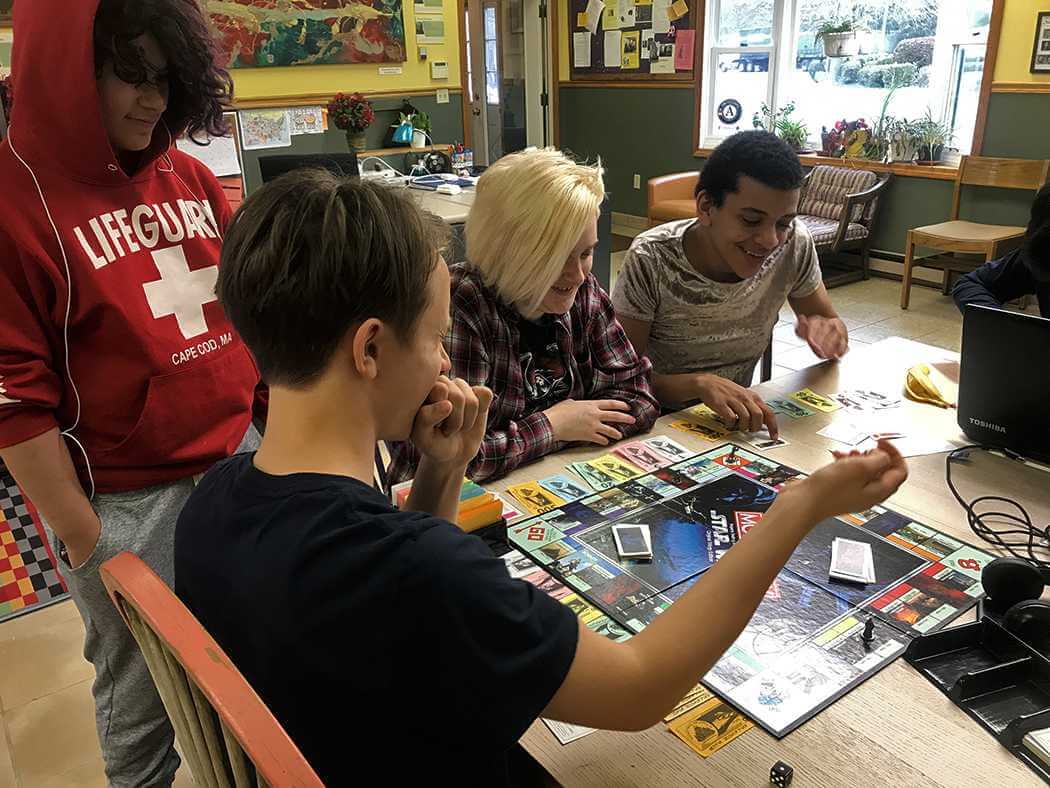
What’s Required?
This is my favorite question to ask of any system of education: What is absolutely mandatory? What can’t you opt out of, at the risk of getting reprimanded or kicked out?
(Every Sudbury school, LL center, and ALC has some set of non-negotiable behavioral rules. Physically assaulting someone else, for example, would never be acceptable. Below I describe what you’re required to do on a typical, day-to-day basis.)
Sudbury: jury and chores
Generally, only mandatory activity in a Sudbury school is periodically serving on the school’s Judicial Committee. Many schools also require that all students perform a cleaning chore several days a week, and some schools do occasionally require participation in School Meetings. Otherwise you are free to do what you want, all day, every day.
Liberated Learners: weekly mentor meetings
Beyond the aforementioned weekly advisory meetings, you are free to do what you want at a Liberated Learners centers, all day, every day. The one slight exception is the Monday morning meetings where general announcements are made and community issues are discussed; if you’re in the building on Monday morning, you’re required to be present at the meeting.
Agile Learning Centers: spawns, set the week, and change-up
ALCs have the most required activities of the three models.
At a typical ALC, there are daily morning and afternoon meetings (which are sometimes called “spawn points,” a reference to gamer culture) that last 10-30 minutes. For a tiny ALC, these meetings might involve everyone; larger communities break into small groups.
Daily meetings are commonly led by staff members, but as an ALC’s culture develops, young people increasingly step into the role of facilitator.
At ALC Mosaic, where I observed different “spawns” for a week, each follows the same format: starting a “centering” activity, followed by each person stating their intentions for the day, finishing with a “connection” (i.e., “getting to know you”) activity. In afternoon spawns the format is the same, except that students reflect on their stated intentions.
On Mondays at ALC Mosaic there is an all-school “Set the Week” meeting where—much like the Liberated Learners Monday morning meeting—a facilitator reviews the upcoming activities and gives the group a chance to discuss and make additions.
Finally, every Wednesday at ALC Mosaic, the entire school comes together for “Change-Up” meeting, where school culture and rules are discussed, modified, and tracked using a “Community Mastery Board.” (Change-Up and Set the Week each took about half an hour the week I was there.)
Participating in each one of these activities, as well as an end-of-day clean-up period, is part of the 2018-19 ALC Mosaic “Student Agreement” to which all students had to agree—and this seems like the typical approach taken by other ALCs. (That being said, I did notice that some students departed early on multiple days, missing their afternoon spawn points, and this was a commonly accepted practice.)
Beyond these meetings, at an ALC you are free to do what you want, all day, every day.
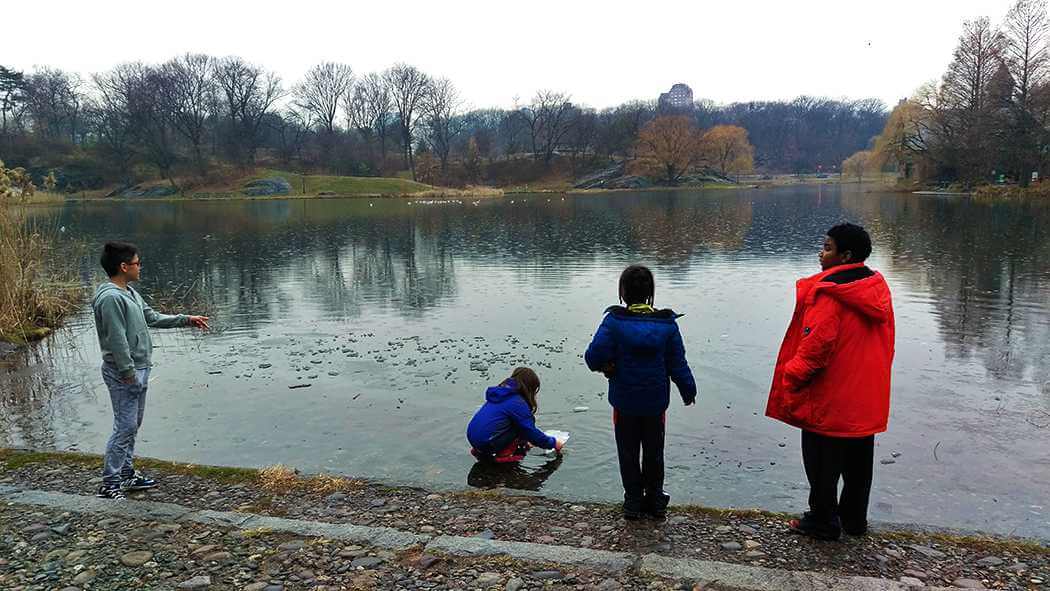
Conflict Resolution
When something’s amiss, who solves the problem, and how?
While each of the models embraces some version of mediation, restorative justice, or nonviolent communication, they differ in their implementations.
Sudbury: trial by jury
In Sudbury schools, the Judiciary Committee (J.C.) enforces school rules and metes out sentences to perpetrators. The J.C. is populated by a rotating cast of students, who form the majority of the Committee, plus one or two staff members.
When there’s a conflict that the parties involved can’t solve informally, one person will “write up” another and submit it to the J.C., which meets every day. If you’ve been written up then you will be required to show up for the J.C., state your case, and receive a verdict. Anyone can be written up in a Sudbury school, including staff.
Judiciary Committees try to focus on the facts of the event in question, create sentences that clearly repair whatever harm was caused, and sometimes take the input of the perpetrator in deciding how to move forward. In practice, conflict resolution at Sudbury schools is often more collaborative and less harshly punitive than it sounds on paper.
Sudbury Schools pride themselves on the democratic and participatory nature of their conflict resolution process: because the same person who was written up might next week serve on the J.C.—and because the rules are democratically decided—everyone takes the system more seriously.
Liberated Learners: benevolent dictatorship
Liberated Learners centers resolve conflicts in a more adult-driven fashion. When a young person cannot resolve a conflict on their own—or if they break a policy or agreement—a staff member facilitates the mediation process, bringing in all affected parties (sometimes including parents) as needed.
While the staff hold ultimate decision-making power, they are careful to promote clear communication and reach mutually acceptable resolutions among all parties.
Agile Learning Centers: mutual aid
Most ALCs have a four-step conflict resolution system that asks students to first check-in with themselves, then try talking to the other person, then ask a third party to mediate, and finally, to create a “Culture Committee” to tackle the issue. Culture Committees typically include both students and staff who together attempt to reach a consensus decision.
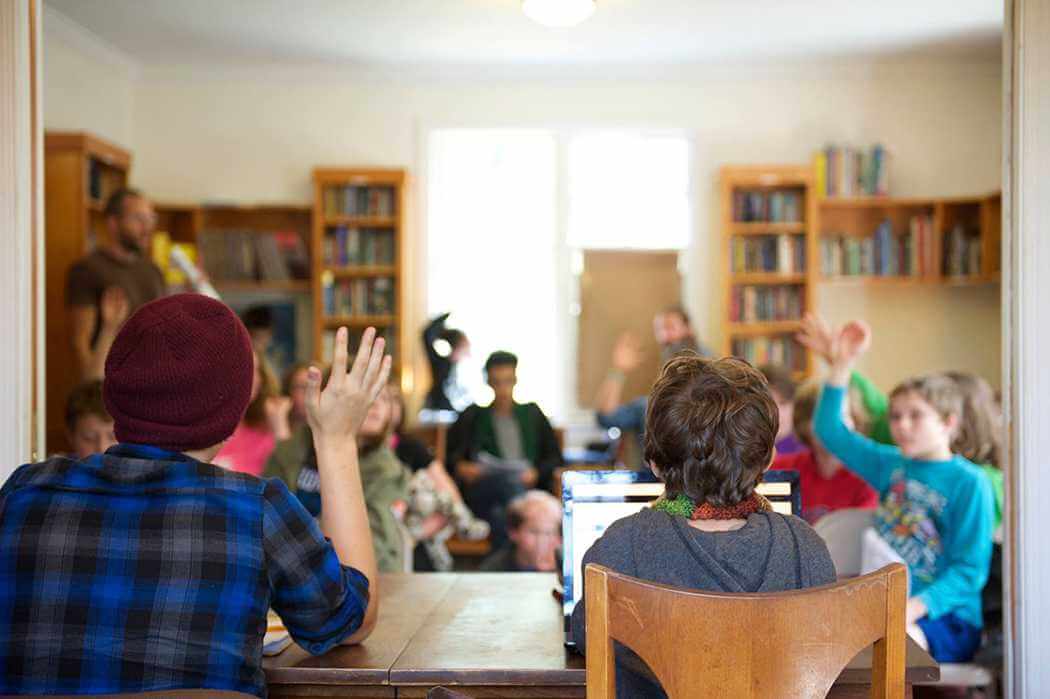
Who Makes the Decisions, and How?
How are school rules determined? How are activities scheduled and resources allocated? What are the decision-making systems?
Sudbury: majority rules
The School Meeting is the governing body of a Sudbury School, where every member (student and staff alike) holds an equal vote. School Meetings loosely follow Robert’s Rules of Order and require a simple majority to pass a normal motion (like spending money) or a two-thirds majority to for major changes (like altering the school’s by-laws).
While adhering to these strict voting rules, Sudbury schools do attempt to work toward near-consensus on all matters of substance; if a vocal minority has serious concerns about something, for example, the majority will often withdraw their motion to work towards a compromise.
Every issue of substance passes through the School Meeting, whether it’s a new visitor, the hiring (or firing) of a staff member, or a rule about where you can eat food. The School Meeting often creates smaller groups (called Committees) and positions of authority (called Clerkships) that are filled by students and/or staff. For example, at a typical Sudbury school there may be an Admissions Committee, Marketing Committee, J.C. Clerk, and School Meeting Clerk.
This video from the original Sudbury Valley School offers a clear picture of the School Meeting process, run by one of the students.
Liberated Learners: benevolent dictatorship
Adult staff make the major decisions at Liberated Learners centers (e.g., staffing and budget). Smaller decisions are made at the Monday morning meeting with member input.
Agile Learning Centers: consent-based decision making
Set the Week and Change-Up meetings are facilitated by either staff or students and use a version of consensus decision-making, which ALCs call “consent-based” decision making. These decisions are iterative, which means that they are temporary and constantly revised. When agreeing to a new school policy, for example, the community may only commit to trying it out for two weeks. Then they tweak, improve, and adjust the policy, visually tracking this process with the Community Mastery Board.
When a proposal is on the table, the meeting facilitator leads a discussion and seeks agreement from everyone present, often taking the “temperature” of the room through a quick thumbs-up / thumbs-sideways / thumbs-down poll. The facilitator seeks broad agreement among all members and only moves forward if there are no major objections.
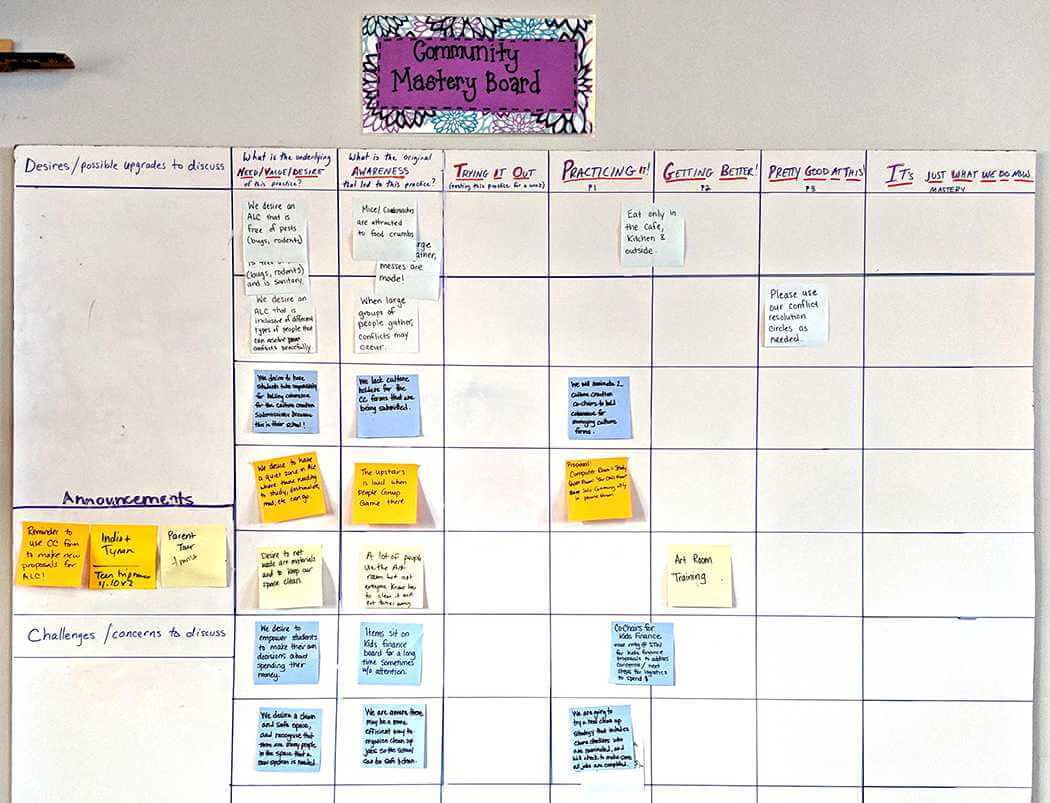
[click on image for enlarged version]
Classes, Activities, Mentorship, and Asking for Help
When a young person desires a more structured learning experience, what kind of opportunities exist, and what is the culture around them?
(Note: In all of these models, the students/members are fully empowered to organize classes, activities, and groups themselves.)
Sudbury: non-interference
In a Sudbury School, the adult staff do not interfere with students. They do not offer help or guidance unless it’s explicitly requested. This policy extends to classes, field trips, and other organized activities: each must be initiated by a student.
What I describe above might be called “orthodox” Sudbury; in practice, many staff do form natural relationships with students and offer them advice, as one friend might do to another—while always remaining careful not to patronize or push an agenda.
Sudbury schools do not have pre-populated class schedules. Some schools do bring in guests from the outside world (e.g. instructors or tutors), as long as they clearly grasp the Sudbury philosophy. Parents are typically discouraged or disallowed from hanging around during school hours.
Sudbury staff pride themselves on creating a protected community where a child can truly be a child, free from the interference of well-intentioned “helpful” adult whose interactions with students undermine intrinsic motivation.
Liberated Learners: many offerings + active engagement
In a Liberated Learners center, staff regularly offer classes, workshops, field trips, and other activities that they think may be of interest to members. Centers have pre-populated weekly class/activity schedules. Staff also regularly offer one-on-one “tutorials” in various subjects, when requested. Members, too, offer classes or tutorials to each other (in guitar, language, or math, for example).
Community members commonly get involved in LL centers as guest instructors or tutors; many centers are intentionally located near college campuses in order to recruit college students volunteers. Parents are allowed to spend time at the centers, as long they’re not anxiously spying on their kids.
The adult staff frequently engage their members—at a minimum, through the required weekly one-on-one mentorship meetings—to ask how they are doing, what they need, and to suggest that they take advantage of activities and resources that the center offers. The staff attempt to remain mindful of their positions of authority and not push too hard or act coercively.
Liberated Learners staff pride themselves on their honest and straightforward relationships with members.
Agile Learning Centers: ditto
ALCs are similar to Liberated Learners centers. Staff take an active role in offering activities and engaging students, students regularly organize activities for each other, and members of the greater community (including parents) regularly make offerings and spend time on campus.
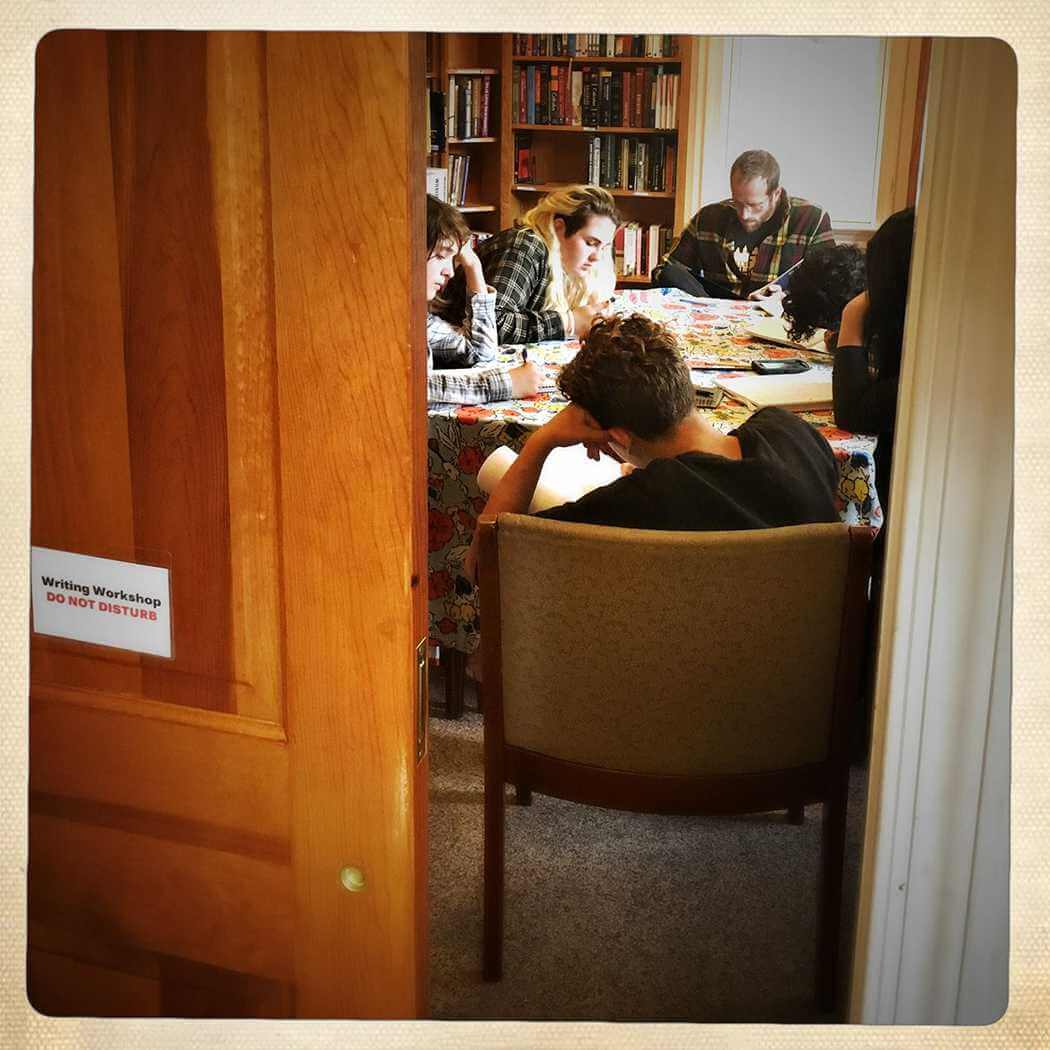
Graduation
How do you formally complete your time at this place? Where do graduates go, and what happens to them?
Sudbury: diplomas
To qualify for graduating and receiving a diploma, the typical Sudbury school requires a student to have been enrolled for two or three years. The diploma procedure is initiated by the student, who must convince a school Assembly or Diploma Committee that, as described by SVS, “My experiences during my stay at school have enabled me to develop the problem-solving skills, the adaptability, and the abilities needed to function independently in the world that I am about to enter.”
Graduating is not required, and not all Sudbury students seek a diploma.
Peter Gray and David Chanoff conducted a follow-up survey of Sudbury Valley School graduates in 1986—as did SVS itself in 1991—showing that alumni successfully go on to careers, higher education, and other pursuits.
Liberated Learners: no such thing
There is no formal way to complete your time at a Liberated Learners center. You leave when it’s no longer needed, and the staff help you figure out your next steps.
The most common path for those moving on from a LL center is to enroll in community college and/or obtain a GED; many members do this while continuing to participate in the center.
In 2017 Ken Danford conducted a follow-up survey of 267 North Star alumni, published by the Alliance for Self-Directed Education, demonstrating that alumni successfully go on to careers, higher education, and other pursuits.
Agile Learning Centers: not yet applicable
As a young network with few graduates who have spent significant time at an ALC, the jury is still out on what happens to alumni. Some ALCs do have a diploma process established, which varies based on location.
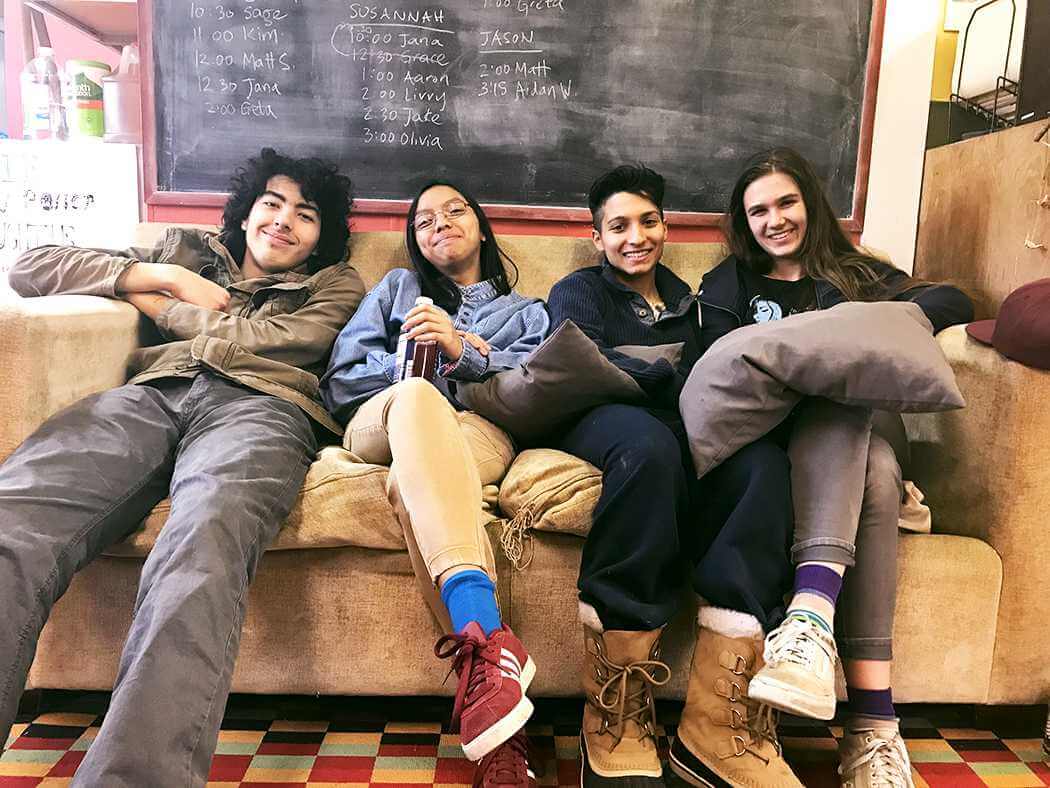
Conclusion: What’s the Same?
While I’ve spent much of this article describing the differences between these three models, fundamentally they are very much the same. Each offers:
- A stable, welcoming, and supportive community for young people
- Unrestricted free play and age mixing
- No mandatory tests, labeling of students, or judgement of what’s “okay” to learn
- No manipulation (whether subtle or overt) of young people by adults
- Meaningful relationships with adults based on natural authority, not arbitrary power
- Deep respect for the power of self-direction to drive the learning process
Like the parable of the blind men and the elephant, I believe that each of these models has a grasp on the true spirit of Self-Directed Education. A decade ago there were very few schools and centers like these; a decade before that, even fewer. The fact that Sudbury schools, Liberated Learners, and Agile Learning Centers are becoming commonplace—and that all of them fundamentally respect the autonomy, dignity, and consent of the young people they serve—is a fact worth celebrating. The more numerous and diverse these options become, the better off we all are.
No matter which model you prefer, at the end of the day, we’re all on the same team.
[1] There are other alternative schools and self-directed learning centers that don’t affiliate with any of these networks but operate in essentially the same fashion; for the purposes of this article I focus exclusively on the three most widespread and rapidly growing networks.
[2] While I’ve personally spent time in these networks, interviewed long-term staff, and read extensively about each model—I’m sure that I’m still missing important parts of the puzzle, if only for the reason that individual communities often diverge from their respective models. If you have an observation or constructive addition to share about your experience with Sudbury schools, Agile Learning Centers, or Liberated Learners centers, I invite you to do so on this ASDE forum.
If you enjoyed this article and feel called to give back to ASDE, here are ways you can support our work:
- Donate money
- Share our content with others! Click one of the buttons above to easily share on Twitter, Facebook, or email.
- Consider becoming a Contributor for Tipping Points
Tipping Points Magazine amplifies the diverse voices within the Self-Directed Education movement. The views expressed in our content belong solely to the author(s). The Alliance for Self-Directed Education disclaims responsibility for any interpretation or application of the information provided. Engage in dialogue by reaching out to the author(s) directly.


